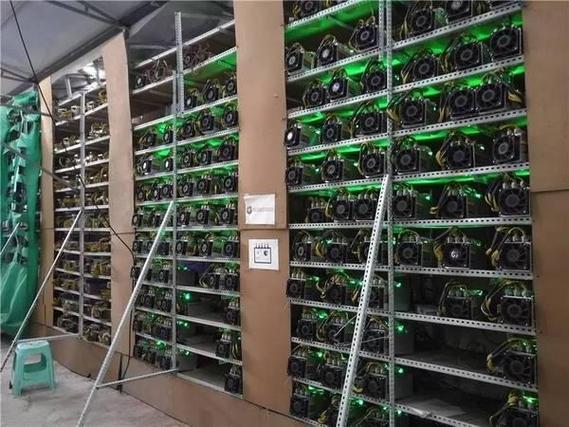In the rapidly evolving landscape of cryptocurrencies, the backbone of network security and transaction validation is, without doubt, mining machines—especially ASIC miners. These specialized devices, designed solely for mining digital currencies like Bitcoin and Ethereum, revolutionize how blockchain networks maintain integrity and prevent fraud. Unlike general-purpose hardware, ASIC (Application-Specific Integrated Circuit) miners boast unparalleled efficiency, rendering them the gold standard in crypto mining operations. Their dominance extends beyond just performance; they redefine energy consumption metrics and profitability models in the crypto ecosystem.

Mining farms, sprawling complexes housing thousands of ASIC miners, epitomize the industrial aspect of cryptocurrency mining. These farms amalgamate raw computational power to solve intricate cryptographic puzzles that authenticate transactions on networks such as Bitcoin (BTC) and Ethereum (ETH). Hosting services for these powerful machines have burgeoned into an essential business vertical, offering miners a hands-off approach while ensuring optimal environmental conditions and uninterrupted power supplies. This symbiosis between miners and hosting providers accelerates transaction verification speeds and strengthens the security fabric of decentralized networks.
The volatility of cryptocurrencies like Dogecoin (DOG) and Ethereum Classic (ETH) stirs a unique dynamic in how mining resources are allocated and optimized. While Bitcoin mining remains heavily ASIC-dominated due to the SHA-256 algorithm’s requirement for immense hashing power, coins like Ethereum initially favored GPU mining. However, with the advent of ASIC miners tailored for Ethash—Ethereum’s underlying algorithm—the landscape is gradually shifting toward specialized hardware, stimulating competition among hardware manufacturers and fostering innovation. This hardware evolution indirectly influences exchange volumes and liquidity by stabilizing block production times and bolstering network reliability.

At the core of cryptocurrency networks, miners serve as gatekeepers and validators, but the sophistication of ASIC miners has exacerbated centralization concerns. The concentration of mining power within large-scale mining farms can lead to ‘51% attacks,’ posing risks to network security. This potential vulnerability has ignited debates around decentralization—a foundational ethos of blockchain technology. Consequently, the industry witnesses a continuous tug-of-war between maximizing mining efficiency through ASIC miners versus preserving decentralized network dynamics. Hosting providers and exchanges weigh these factors carefully to offer services that balance security, performance, and user trust.
Exchanges, as pivotal hubs facilitating the trade of digital assets, are indirect beneficiaries of ASIC mining technology. Rapid block confirmations and network stability afforded by powerful mining rigs translate into enhanced user experience. Traders gain confidence that transactions settle promptly without undue delay or risk of chain reorganizations. Moreover, mining fees—a critical revenue stream for miners—fluctuate in tandem with network congestion, prompting miners to modulate their hash power deployment strategically. The interdependence between mining operations, hosting services, and exchanges illustrates a complex ecosystem driven by technology and economics alike.
Looking ahead, the trajectory of ASIC miners hints at continuous innovation, pushed by ever-increasing difficulty levels and energy efficiency demands. Developments in cooling systems, such as immersion cooling and AI-driven thermal management, are making hosting mining centers more sustainable and cost-effective. Additionally, some projects are exploring application-specific devices beyond merely hashing—for instance, ASICs tailored for proof-of-stake validators or hybrid consensus mechanisms. These advancements underscore the immense versatility and critical role ASIC technology holds in shaping the future contours of cryptocurrency networks and mining enterprises.
The diversity within mining rigs—ranging from compact, consumer-grade devices to industrial-scale ASIC arrays—caters to varied market segments. Individual miners often engage in hosting services to offset operational complexities, while large mining farms leverage economies of scale and cutting-edge ASIC miners to maximize profitability amid fierce global competition. Meanwhile, niche cryptocurrencies continue to experiment with ASIC-resistant algorithms to democratize mining access and preserve decentralization. This ongoing dialectic between innovation and inclusiveness makes the mining realm a fascinating arena where hardware ingenuity and economic incentives intersect.
This article meticulously explores the essential function of ASIC miners within cryptocurrency networks, shedding light on their impact on efficiency and security. It balances technical depth with accessibility, offering insights into the evolving landscape of mining technology, energy consumption, and economic implications, making it a compelling read for enthusiasts and industry professionals alike.